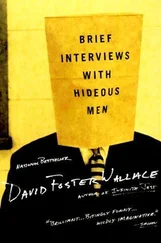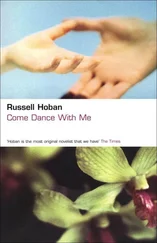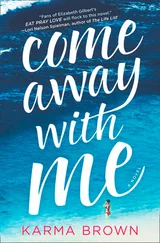Scott MacDonald - A Critical Cinema 2 - Interviews with Independent Filmmakers
Здесь есть возможность читать онлайн «Scott MacDonald - A Critical Cinema 2 - Interviews with Independent Filmmakers» весь текст электронной книги совершенно бесплатно (целиком полную версию без сокращений). В некоторых случаях можно слушать аудио, скачать через торрент в формате fb2 и присутствует краткое содержание. Год выпуска: 1992, ISBN: 1992, Издательство: University of California Press, Жанр: Прочая документальная литература, на английском языке. Описание произведения, (предисловие) а так же отзывы посетителей доступны на портале библиотеки ЛибКат.
- Название:A Critical Cinema 2: Interviews with Independent Filmmakers
- Автор:
- Издательство:University of California Press
- Жанр:
- Год:1992
- ISBN:9780585335100
- Рейтинг книги:3 / 5. Голосов: 1
-
Избранное:Добавить в избранное
- Отзывы:
-
Ваша оценка:
- 60
- 1
- 2
- 3
- 4
- 5
A Critical Cinema 2: Interviews with Independent Filmmakers: краткое содержание, описание и аннотация
Предлагаем к чтению аннотацию, описание, краткое содержание или предисловие (зависит от того, что написал сам автор книги «A Critical Cinema 2: Interviews with Independent Filmmakers»). Если вы не нашли необходимую информацию о книге — напишите в комментариях, мы постараемся отыскать её.
A Critical Cinema 2: Interviews with Independent Filmmakers — читать онлайн бесплатно полную книгу (весь текст) целиком
Ниже представлен текст книги, разбитый по страницам. Система сохранения места последней прочитанной страницы, позволяет с удобством читать онлайн бесплатно книгу «A Critical Cinema 2: Interviews with Independent Filmmakers», без необходимости каждый раз заново искать на чём Вы остановились. Поставьте закладку, и сможете в любой момент перейти на страницу, на которой закончили чтение.
Интервал:
Закладка:
Fist Fight
seems the most ambitious. Thousands of photographs, drawings, and objects are animated into a fascinating diary of Breer's environment, his background, and his aesthetic repertoire.
By the mid sixties Breer was moving away from collage and back toward abstraction in
66
(1966),
69
(1968),
70
(1970), and
77
(1977). Not only is
69
the most impressive of these (among other things it creates a remarkably subtle palette of shimmering color); its paradoxical structure enacts a procedure which seems basic to much of Breer's work.
69
begins as a rigorously formal work: a series of perspectival geometric shapes move through the image again and again, each time with slight color, texture, and design variations. But as soon as we begin to become familiar with the various shapes and their movements, Breer begins to add details that undercut the hard-edged formalist look and rhythm established in the opening minutes. By the end,
69
seems to have turned, at least in part, into its opposite: the shapes continue to rotate through the frame, but
Page 17
they sometimes ''wilt" into flat, two-dimensional, cartoonlike shapes. For Breer, the homogeneity of most film experiencesthe seemingly almost automatic tendency for commercial narrative films, as well as for documentary and experimental films, to establish a particular look and procedure and to rigorously maintain it throughout the duration of the presentationrepresents a failure of imagination that needs to be filmically challenged.
During the seventies and eighties Breer produced films that bring together many of the procedures explored in earlier work while continually trying out new procedures, new attacks on filmic homogeneity:
Gulls and Buoys
(1972),
Fuji
(1974),
Rubber Cement
(1975),
LMNO
(1978),
TZ
(1978),
Swiss Army Knife with Rats and Pigeons
(1980),
Trial Balloons
(1982),
Bang!
(1987),
A Frog on the Swing
(1988) . . .
I talked with Breer in January and February 1985.
<><><><><><><><><><><><>
MacDonald:
One influence that seems clear in your first films,
Form Phases I
and
Form Phases II
is Emile Cohl.
Breer:
I hadn't seen Cohl's films at that point. After I did
A Man and His Dog Out for Air,
Noel Burch, who was also in Paris at that time, asked me if I'd seen Cohl. When I said no, he took me over to the Cinematheque, and we saw Cohl's films there.
MacDonald:
The similarity I see is the idea of animation being primarily about metamorphosis, rather than storytelling.
Breer:
I did what I've always done. I skipped cinema history and started at the beginning. I used very peculiar techniques because I didn't know how to animate. That I would do what Cohl did makes sense. You know Santayana's line about how, if you don't know something, you're doomed to relive it. I'm still working out things that people worked out years ago. My rationale is to not risk being influenced, but in truth it might just be laziness. I think it makes sense to do research. My old man was in charge of research at an engineering firm. The word was part of his title, and he used the word all the time. But I always associated it with the academy and with institutions and didn't want any part of it. I remember seeing a book,
How to Animate,
put out by Kodak I think. The kind of cartooning it was pushing turned me off so badly that I didn't want to learn
anything
they had to offer. I was afraid it would contaminate me.
MacDonald:
In
Form Phases I
you were already doing sophisticated work with figure and ground, and with the way the eye identifies and understands what it sees.
Page 18
Breer:
Oh sure. That comes out of my paintings.
Form Phases I
was a painting before it was a film. I used its composition for the film. I moved the shapes around and had them grow and replace each other. I went from making paintings to animating paintings. For me, that was the whole point of making a film.
I was very involved with the abstract, geometric, post-Cubist orthodoxy: a painting is an object and its illusions have to acknowledge its surface as a reality. The tricks you use to do that are Cubist tricks: figure/ground reversals, intersections, overlappings. Of course, [Hans] Richter did all this in 1921 in
Rhythm 21
. I guess it's pretty obvious that I'd seen that film by the time I made
Form Phases IV
. I got to know Richter later in New York, but I remember that film having a big impact. I lifted stuff right out of it.
MacDonald:
How long had you been painting in Paris before you began to make films?
Breer:
I went to Paris in 1949. I started abstract concrete painting in 1950, about six months after I arrived. Until then I had painted everything from sad clowns to landscapes. The first film was finished in 1952.
MacDonald:
In
Fist Fight
there's an image of a gallery with Mondrianesque paintings . . .
Breer:
Those are mine. That was my gallery, though by that time I wasn't rectilinear the way Mondrian is. The Neoplastic movement with [Victor] Vasarely and [Alberto] Magnelli had happened, and I was aware of their new take on constructivism.
MacDonald:
I was going to ask you about Vasarely. There are places in
Form Phases IV
and also in
Image by Images
[1956] and
Motion Pictures
(1956) where one striped design passes over another to create an optical effect that reminds me of Vasarely.
Breer:
My earliest paintings in Paris were influenced by early Vasarelynot by what got to be called "op art," but by his earlier paintings, which were very simple and much less systematic than the later op works. By the time I was making films, I wasn't interested in Vasarely, though maybe there's some residue.
The movement show at Denise René Gallery opened in 1955. And to go along with it, Pontus Hulten was supposed to organize a film show. He's an art historian and until recently was the director of the Beauborg Art Museum in Paris. He did the Machine show at MoMA [The Machine as Seen at the End of the Mechanical Age, 1968]. Pontus got sick, and I picked up the pieces a little bit and helped him. We were drinking buddies in Paris. He was a collaborator on my Pope Pius film [
Un Miracle
], and he used my camera to make an abstract film called
X
. He also made
A Day in Town
[1956], a Dada-surrealist film that ends with a fire engine burning. Anyhow, the two of us made a document of Denise
Page 19
René's movement show. Denise bought a couple rolls of film for us, and we used my camera. Later I did the editing. That show was the first time Vasarely showed those grids that would swing in front of one another. Maybe that was the first gallery show of exclusively kinetic art, although, of course, Denise was preceded in general by the futurists. But after the war, kineticism was one of the things she picked up on. [Jean] Tinguely was incorporated into her gallery after his first show.
On a visit home in 195152, I went to an art supply store in downtown Detroit and saw this device"Slidecraft" I think it was called. You could rent a projector and buy a bunch of frosted three-by-three-inch slides and draw on them. I made sequences and projected them singly onto a screen, and then filmed them off the screen, one at a time. That's how I made
Читать дальшеИнтервал:
Закладка:
Похожие книги на «A Critical Cinema 2: Interviews with Independent Filmmakers»
Представляем Вашему вниманию похожие книги на «A Critical Cinema 2: Interviews with Independent Filmmakers» списком для выбора. Мы отобрали схожую по названию и смыслу литературу в надежде предоставить читателям больше вариантов отыскать новые, интересные, ещё непрочитанные произведения.
Обсуждение, отзывы о книге «A Critical Cinema 2: Interviews with Independent Filmmakers» и просто собственные мнения читателей. Оставьте ваши комментарии, напишите, что Вы думаете о произведении, его смысле или главных героях. Укажите что конкретно понравилось, а что нет, и почему Вы так считаете.











